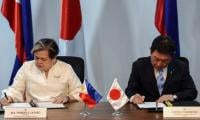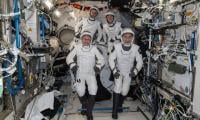Gwadar: the economic gateway
Prime Minister Imran Khan’s maiden visit to China defined a new chapter in bilateral relations between both countries and delineated the future progress of CPEC.
Alongside the signing of multiple MoUs and agreements on diverse areas of cooperation, the prime minister’s address at the Party School of the CPC Central Committee and visit to the First China International Import Expo further deepened the all-weather friendship between China and Pakistan from a strategic and long-term perspective.
The presence of Balochistan Chief Minister Jam Kamal Khan in the PM’s delegation is a strong testament of the fact that the incumbent government is committed to the development of Balochistan, especially Gwadar.
Notwithstanding whether we are aware of CPEC, Gwadar remains a familiar name for many. Long before CPEC came to the fore, Gwadar had etched its mark in the geostrategic annals of the region. Gwadar’s strategic location and its deep-sea port in the warm waters of the Indian Ocean provide a strategic gateway to the world’s most sought-after markets. Located right in the middle of the straits of Hormuz and Malacca, Gwadar has the potential to be the most ideal port for countries in the region whether it is for trade purposes or simply shipment transits.
With its potential to be the fulcrum of economic development in western Pakistan, the Gwadar Port is gearing up to become the hub of trade, industry and large-scale business activities. Future incoming investment – foreign and domestic – and increasing economic activities will not only transform the outlook of Gwadar, but will also positively impact the development of Balochistan’s remote areas.
The flurry of economic activities will generate revenue for Balochistan, enhance its GDP growth, and create massive employment opportunities in various fields. The foundation has been laid with the start of regular shipping services from Gwadar. Subsequently, this will lead to improvements in social sectors, such as education and health.
Overall, the importance of CPEC as a strategic alternative is immense. Leveraging the economic opportunities that it can unleash may trump its strategic significance and bring prosperity, peace and stability in the entire region.
Prime Minister Imran Khan and Minister for Planning, Development and Reform Makhdoom Khusro Bakhtiar recently announced the government’s plans to broaden the scope of CPEC by including socioeconomic development and poverty alleviation programmes as well as third-party participation into the core focus areas.
As a key part of CPEC’s core focus, Gwadar is also prioritised by the government as a standalone project within the economic corridor. Similarly, it remained a key point for discussion during the PM’s visit to China and will be a vital concern during the upcoming meeting of the 8th CPEC Joint Cooperation Committee (JCC).
In accordance with the government’s plans, the development of Gwadar as a standalone project through sound and progressive planning will usher in a new chapter of a prosperous and green future within its local cultural character, and present an international gateway for prosperity. The good news is that Gwadar is soon going to witness a series of groundbreaking projects, including the New Gwadar International Airport, a vocational centre, the China-Pakistan Friendship Hospital and a host of socioeconomic uplift projects. In addition, the government is close to baselining the Gwadar Smart Port City Master Plan that will set the course for it to become a well-planned urban city with business centres and trade hubs, generating a demand for the Gwadar Port in the national and international context.
Nevertheless, certain critical bottlenecks continue to hamper the smooth and swift development of the port and its surrounding areas. To start with, the provision of water remains a key issue. The current demand for water in Gwadar is around 6.3 million gallons per day (MGD) while the supply stands at 2.9 MGD, out of which 2.7 MGD is being supplied through the Ankara Kaur Dam and 0.2 MGD is being supplied by the China Overseas Ports Holding Company (COPHC) Gwadar.
However, both provincial and federal governments are cognisant of the provision of water to Gwadar’s people and are working towards enhancing water supply to around 12 MGD by 2020. Phase-I of the project entails a 67 kilometre-long water supply transmission line from the nearby Swad Dam to Gwadar city.
Furthermore, a 4-MGD desalination plant is being built by the Frontier Works Organisation (FWO) along with the 5-MGD Reserve Osmosis Sea Water Plant for Gwadar city, which has been included in the PSDP 2017.
With respect to electricity, Gwadar chiefly relies on Iran for its power needs through the 132kV high-voltage power distribution network that provides 100MW for the entire coastal belt. The current power demand for Gwadar city stands at 45MW.
With the gradual development of the port and the city itself, power demand will naturally increase. To address this challenge, a 300MW Gwadar Coal Power Plant will ensure a steady supply of electricity up until at least 2030. For the long term, more power projects that rely on indigenous and green sources of energy will be prioritised.
Once these bottlenecks are removed, the port city has the potential to attract foreign investment in the transhipment, petrochemicals, fisheries and tourism sectors. Industrialisation in Gwadar, being a major component of the city’s blue economy, is the key towards achieving economic growth and unemployment in the region. As per the plans to develop the port and a free-trade zone, the construction of industrial units is expected to be initiated next year.
Heavy industries – such as refining oil, assembling transport equipment, and processing building material – and light industries – such as fisheries, edible oil and other forms of food processing – can be set up in Gwadar if infrastructure and energy needs are met, and a long-term plan is chalked out for light industries that includes raising the industrial level to form a value-added industrial cluster of the aforementioned products.
In Gwadar’s fisheries industry, the short-term and medium-term focus will be on fostering aquaculture. Gwadar’s fish and fish products are renowned for their quality around the world and more than 90 percent of Gwadar’s population relies on the fishing sector. That’s why, thanks to the port’s development and the advent of CPEC, fish from Gwadar are already being exported to Guangzhou and Xingjiang in China. However, this potential is being harnessed through the development of better processing units.
Gwadar is a jewel in CPEC’s crown. Therefore, it should be developed into an integrated city in the long run so that it can play its role as a regional leader and assume the functions of a regional city that serve the vast hinterland regions of Pakistan and our neighbouring countries. Once the port is completed by 2030, it is expected to have considerable advantage over its regional competitors in terms of both hard and soft infrastructure elements.
The writer is a project management specialist and a faculty member at various universities.
Email: hdb4049@gmail.com
-
 Amazon Rolls Out ‘sovereign’ EU-based Cloud To Address Data Privacy Concerns
Amazon Rolls Out ‘sovereign’ EU-based Cloud To Address Data Privacy Concerns -
 Ross, Matt Duffer Used AI To Write Finale Of 'Stranger Things'?
Ross, Matt Duffer Used AI To Write Finale Of 'Stranger Things'? -
 Microsoft Secures Largest Ever Soil Carbon Credit Agreement Amid Data Centres Expansion
Microsoft Secures Largest Ever Soil Carbon Credit Agreement Amid Data Centres Expansion -
 Google Expands Gemini With Personal Intelligence
Google Expands Gemini With Personal Intelligence -
 Japan, Philippines Sign Defence Pacts As Regional Tensions Escalate
Japan, Philippines Sign Defence Pacts As Regional Tensions Escalate -
 ISS Crew Of Four Completes Medical Evacuation With Safe Splashdown Off California
ISS Crew Of Four Completes Medical Evacuation With Safe Splashdown Off California -
 Connor Storrie Reveals Why His Dad Hasn't Seen 'Heated Rivalry' Yet
Connor Storrie Reveals Why His Dad Hasn't Seen 'Heated Rivalry' Yet -
 Meghan Markle’s Biggest Challenge In UK Return As She Struggles To Control Narrative
Meghan Markle’s Biggest Challenge In UK Return As She Struggles To Control Narrative -
 Princess Beatrice, Eugenie Angry As King Charles Ends Their Financial Security
Princess Beatrice, Eugenie Angry As King Charles Ends Their Financial Security -
 Chase Infiniti Shares Her Working Experience With Leonardo DiCaprio
Chase Infiniti Shares Her Working Experience With Leonardo DiCaprio -
 Todd Bridges And Wife Bettijo B. Hirschi Separate After Three Years Of Marriage
Todd Bridges And Wife Bettijo B. Hirschi Separate After Three Years Of Marriage -
 Germany Sends Troops To Greenland Amid Rising Arctic Tensions
Germany Sends Troops To Greenland Amid Rising Arctic Tensions -
 Jonathan Quick, The New York Rangers Face Mounting Pressure As Losses Pile Up
Jonathan Quick, The New York Rangers Face Mounting Pressure As Losses Pile Up -
 Timothée Chalamet, Kylie Jenner Are Living Together In LA: Source
Timothée Chalamet, Kylie Jenner Are Living Together In LA: Source -
 Johnny Knoxville Net Worth: How The Actor Built A $50mn Fortune
Johnny Knoxville Net Worth: How The Actor Built A $50mn Fortune -
 Meghan Markle Hidden Agenda Behind Returning To UK Exposed
Meghan Markle Hidden Agenda Behind Returning To UK Exposed



